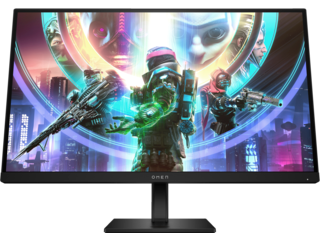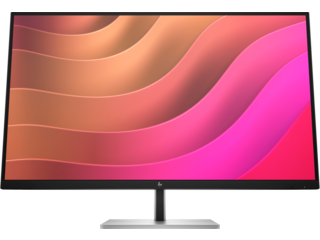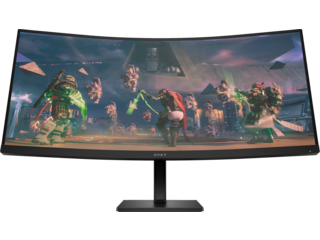When connecting your PC to an external monitor or device, two audio/video connectors reign supreme: DisplayPort and HDMI. While both serve similar purposes, they have distinct capabilities that make them suitable for different uses. Whether you’re a power PC user or simply want more flexibility in your home office setup, understanding the differences between DisplayPort and HDMI can vastly improve your computing experience.
Understanding DisplayPort and HDMI
What is DisplayPort?
DisplayPort, developed in 2006, was intended to update the old VGA and DVI standard connectors. It comes in two main sizes: standard DisplayPort and Mini DisplayPort. Both sizes have 20 pins and feature a locking mechanism to prevent accidental disconnection.
Common DisplayPort versions include:
- DisplayPort 1.2: Supports up to 4K resolution at 60 Hz
- DisplayPort 1.3: Supports up to 4K at 120 Hz or 8K at 30 Hz
- DisplayPort 1.4: Supports up to 8K at 60 Hz with HDR
One of DisplayPort’s key advantages is its ability to support multiple monitors simultaneously.
1920 x 1080 FHD Resolution
5ms Response Time
IPS Panel Technology
HDMI & DisplayPort
HP E24 G5 Monitor
$204.00
2560 x 1440 QHD Resolution
1ms Response Time
240Hz Refresh Rate
HDMI 2.1 & DisplayPort 1.4
OMEN 27qs Monitor
$429.00
3840 x 2160 4K Resolution
5ms Response Time
USB-C with 100W Power
HDMI 2.0 & DisplayPort 1.4
HP E32k G5 4K Monitor
$599.00
What is HDMI?
HDMI (High Definition Multimedia Interface) connectors look similar to DisplayPort but have 19 pins and no locking system. The
HDMI connector is widely used in everyday devices like televisions and gaming consoles. They come in three common sizes: Type A (standard), Type C (mini), and Type D (micro).
Common HDMI versions include:
- HDMI 1.4: Supports up to 4K resolution at 30 Hz
- HDMI 2.0: Supports up to 4K at 60 Hz with HDR capabilities
- HDMI 2.1: Supports up to 10K at 120 Hz with improved HDR
HDMI is equipped with an Audio Return Channel (ARC) that allows audio transmission from the TV to a sound bar or AV receiver.
DisplayPort vs HDMI: Key Differences
- Bandwidth: DisplayPort generally offers higher bandwidth, allowing for higher resolutions and refresh rates.
- Multiple Displays: DisplayPort can support multiple monitors simultaneously, while HDMI typically supports only one.
- Audio Return Channel: HDMI features ARC, which DisplayPort lacks.
- Locking Mechanism: DisplayPort cables have a locking system to prevent accidental disconnection.
- Prevalence: HDMI is more common on TVs, while DisplayPort is more frequently found on PCs and gaming monitors.
When to Use DisplayPort vs HDMI
For 4K Movies, Video, and Audio Signals
For home cinema setups, HDMI is often the better choice. Most TVs come equipped with an HDMI port, making it ideal for home entertainment systems. HDMI 2.0 or 2.1 is essential for optimal 4K viewing. HDMI 2.0a and later versions also support High Dynamic Range (HDR), enhancing color depth and contrast.
Many
HP monitors offer both HDMI and DisplayPort connections, giving you flexibility in your setup.
For PC Displays: Streaming, Computing, and Multiple Monitors
Both DisplayPort and HDMI can support 4K resolution on PC monitors. A DisplayPort cable, in particular, is known for its versatility and ability to handle high-definition video and audio transmission, making it a great choice for connecting audio devices and computers to televisions. The key factor to consider is the monitor’s
refresh rate. For most computing and streaming needs, either connector type will suffice, provided it supports at least 60 Hz refresh rate.
HP’s lineup of business monitors often include both HDMI and DisplayPort inputs, allowing you to choose the best connection for your needs.
For Gaming
For serious gamers, DisplayPort is often the preferred choice. DisplayPort 1.4 supports display stream compression (DSC) to achieve higher refresh rates and resolutions without significant loss in image quality. It offers superior bandwidth (up to 32.4 Gbps in DisplayPort 1.4), which can significantly reduce
screen tearing. DisplayPort is also more commonly found on high-end gaming monitors and graphics cards.
DisplayPort supports NVIDIA G-Sync and AMD FreeSync technologies, which synchronize the monitor’s refresh rate with the GPU’s
frame rate for smoother gameplay.
HP OMEN gaming monitors feature DisplayPort connections to take full advantage of high refresh rates and resolutions.
⚡ Editor's Choice Gaming Monitor
Top Gaming Pick!
OMEN by HP 34" WQHD Curved Gaming Monitor
- 3440 x 1440 QHD Resolution with 165Hz Refresh Rate
- DisplayPort 1.4 and HDMI 2.0 for Maximum Flexibility
- 1ms Response Time with AMD FreeSync™ Premium
165Hz QHD | DisplayPort 1.4 | HDMI 2.0 | 1ms Response
For Visual Designers
Both DisplayPort and HDMI can support high-quality video and audio signals, making them suitable for visual design work. However, DisplayPort’s ability to daisy-chain multiple monitors can be a significant advantage for designers who need to keep an eye on multiple elements simultaneously.
HP’s Z series workstation displays offer both HDMI and DisplayPort connections, catering to the needs of creative professionals.
Using Adapters: DisplayPort to HDMI and Vice Versa
If your devices have mismatched connector ports, such as DisplayPort ports and HDMI ports, adapters can bridge the gap. However, keep in mind that using adapters may result in reduced maximum resolution or refresh rate. When choosing an adapter, consider whether you need a passive or active adapter:
- Passive adapters are cheaper but rely on DisplayPort connectors that support dual-mode.
- Active adapters are more expensive but use additional converter chips to adapt the signal, making them necessary for connecting a DisplayPort source to multiple HDMI displays.
HP offers a range of adapters to help you connect your devices seamlessly.
Conclusion: Which is Better, DisplayPort or HDMI?
The choice between DisplayPort and HDMI often depends on your specific needs and the devices you’re using:
- For TVs and home entertainment setups, HDMI is typically the better choice due to its prevalence and features like ARC, which supports high-quality audio signals.
- For gaming and multi-monitor setups, DisplayPort often offers more flexibility and power.
- For general computing and single-monitor setups, either option will usually suffice.
Ultimately, the best choice depends on the ports available on your devices and your specific use case. Both DisplayPort and HDMI continue to evolve, offering improved capabilities with each new version.
Many HP devices and monitors support both DisplayPort and HDMI, giving you the flexibility to choose the best connection for your needs. Whether you’re a gamer, creative professional, or business user, HP has a monitor that can meet your connectivity requirements.
By understanding the differences between DisplayPort and HDMI, you can make an informed decision and ensure the best audio/video experience for your specific needs.
About the Author
Megan Edwards is a contributing writer for HP® Tech Takes. Megan is a digital content creator based in Southern California and specializes in creating multimedia content for various industries, including technology.
Popular DisplayPort to HDMI Adapters
Popular DisplayPort and HDMI Cables






















